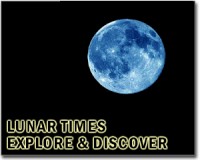 |
Los Angeles CA (SPX) Jun 12, 2009 When NASA launches the Lunar Reconnaissance Orbiter, a yearlong unmanned mission to comprehensively map the entire moon, later this month, UCLA's David Paige will be leading its Diviner Lunar Radiometer Experiment, which will perform the first global survey of the temperature of the lunar surface as the spacecraft orbits some 31 miles above the moon. "The terrain on the far side of the moon is quite different from that of the near side of the moon," said Paige, a professor of planetary science and principal investigator on the Diviner, one of seven scientific instruments on board the mission. "The more we learn about the moon, the better scientific problems we can pose and the better locations we can find for future lunar landings for robotic and human explorers. By getting a comprehensive view, NASA can tailor future landing sites to specific goals." A focus of the Lunar Reconnaissance Orbiter (LRO), which is scheduled to launch between June 17 and 20, will be to study the moon's relatively unexplored polar regions, including extremely cold regions that do not receive direct sunlight and experience temperatures approximately 370 degrees below zero Fahrenheit - cold enough to trap water ice. "We don't really know what we will find when we explore the polar regions thoroughly," Paige said. Will they find deposits of water ice in the polar regions? NASA's Apollo missions revealed that lunar rocks are very dry but did not provide information about the polar regions, where water is most likely to be. There is indirect evidence for water at the moon's poles, Paige said, and the LRO may find more evidence for it. The LRO's scientific instruments, including Diviner, have been tailored to learn more about the potential for water. Diviner, which Paige helped design, will make the first maps of the temperature on the surface of these polar regions. The instrument has the capability to measure very cold temperatures and will, for the first time, characterize the entire thermal environment of the moon. Diviner will also map the composition of the moon and will produce a map that shows how rocky the moon is. "I'm very confident that Diviner will work and that the mission will be successful," Paige said. "I'm very excited." "The Diviner instrument and team is go for launch," said Wayne Hartford, project manager for the Diviner instrument at NASA's Jet Propulsion Laboratory in Pasadena, Calif. "With this instrument's unprecedented capabilities, we are looking forward to helping not only rewrite the moon's history but its future." The trip to the moon is expected to take only about four days. Data from Diviner will arrive continuously. Paige and his colleagues, including UCLA graduate students, will analyze it and post the data on the Diviner website (http://diviner.ucla.edu), where the public can view it. Temperatures on the moon, as on Earth, vary depending on the season, the time of day and other factors. Temperatures at the moon's equator can exceed 240 degrees Fahrenheit in the sunlight and can drop as low as 270 degrees below zero. Paige and his colleagues have built a "digital moon" model that predicts the temperatures of the moon's surface. They will soon be able to compare the model with real data received from Diviner and assimilate the new data into the model. They will learn about what may be under the surface of the moon. In addition to creating a comprehensive atlas of the moon's features with detailed information about surface and subsurface temperatures, Diviner will identify cold traps and potential ice deposits, as well as landing hazards, such as rough terrain or rocks, to be avoided by future manned missions to the moon. LRO is one of NASA's first steps in returning humans to the moon. Data from the LRO will provide NASA with the knowledge necessary to select safe landing sites, identify lunar resources and understand how the lunar radiation environment will affect astronauts. Share This Article With Planet Earth
Related Links NASA Lunar Reconnaissance Orbiter Mars News and Information at MarsDaily.com Lunar Dreams and more
 Japan lunar probe ends mission, is crashed onto moon
Japan lunar probe ends mission, is crashed onto moonTokyo (AFP) June 11, 2009 Japan's first lunar satellite on Thursday ended its scientific mission which started in September 2007 and was manoeuvred to crash onto the moon, the nation's space agency said. The Kaguya, named after a mythical moon princess, was launched to study the moon's origin and evolution by collecting data as it orbited 100 kilometres (60 miles) above the moon, the Japan Aerospace Exploration ... read more |
|
| The content herein, unless otherwise known to be public domain, are Copyright 1995-2009 - SpaceDaily. AFP and UPI Wire Stories are copyright Agence France-Presse and United Press International. ESA Portal Reports are copyright European Space Agency. All NASA sourced material is public domain. Additional copyrights may apply in whole or part to other bona fide parties. Advertising does not imply endorsement,agreement or approval of any opinions, statements or information provided by SpaceDaily on any Web page published or hosted by SpaceDaily. Privacy Statement |